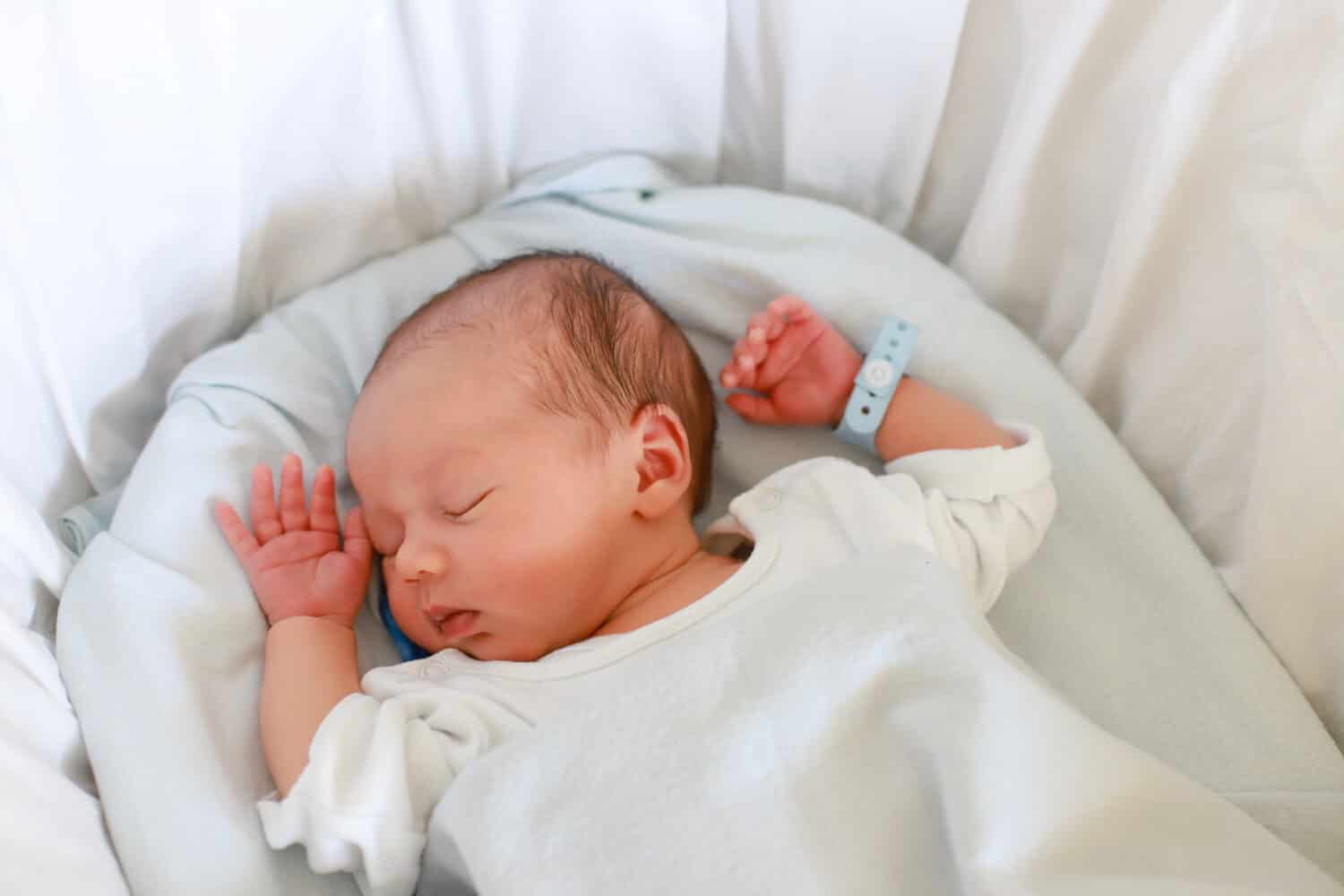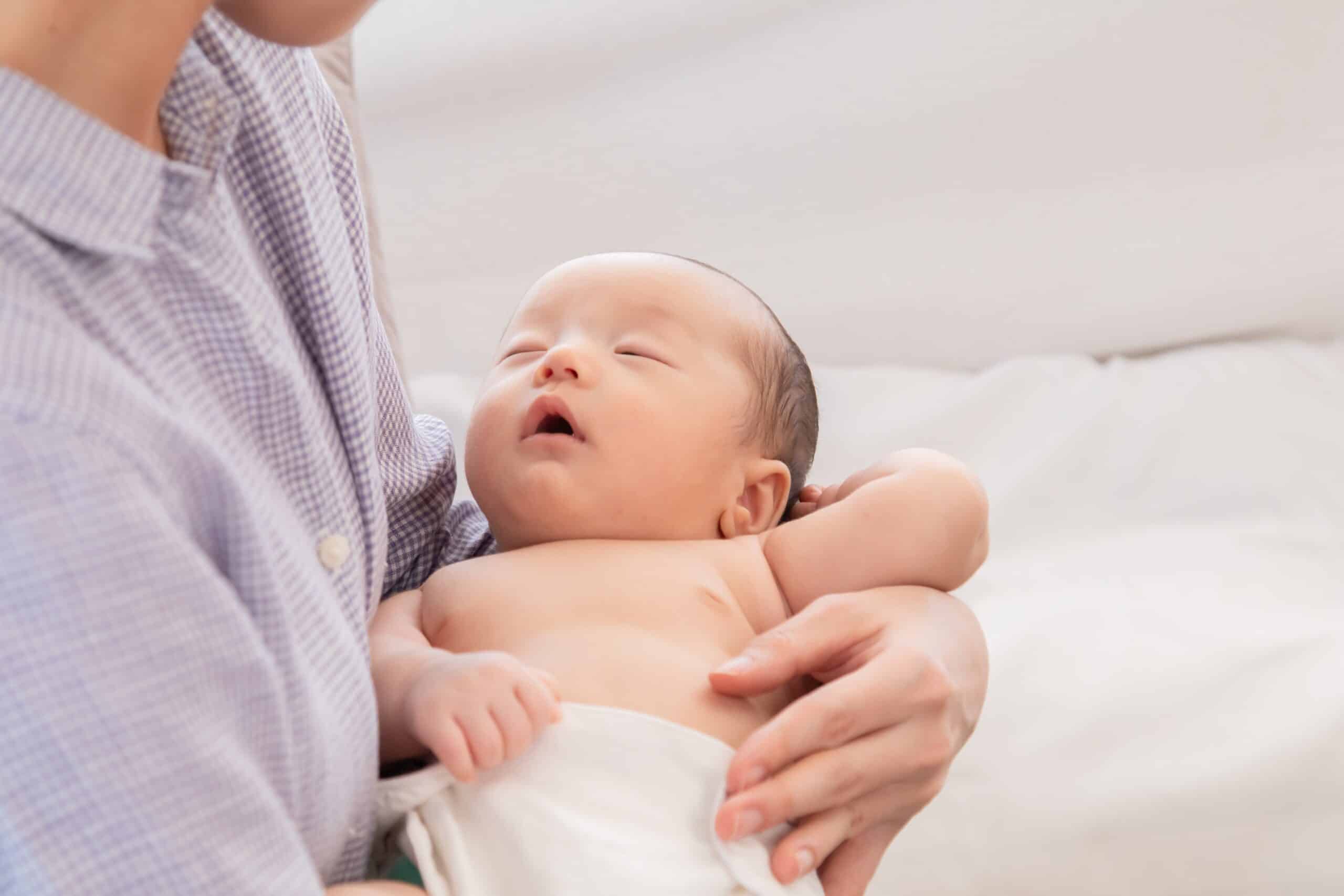

Sudden Infant Death Syndrome: What it Is, How it Happens, How to Prevent It
Becoming a parent is a joyful time. However, there are many scary aspects of caring for another human life. The risk of Sudden Infant Death Syndrome is a terrifying reality. While it's easy to put the thought out of our minds and focus on the happier parts of being a parent, having all the facts is important. What is Sudden Infant Death Syndrome? How exactly does it happen, and how can we prevent it?
What is Sudden Infant Death Syndrome?

©Simplylove/Shutterstock.com
Sudden Infant Death Syndrome, or SIDS, is the unexplained death of a baby. The baby is less than a year old and, in every other way, appears healthy.
Sudden Infant Death Syndrome is a term to describe the sudden and unexplained death of an infant, even after an autopsy.
SIDS became an official term in the late 1960s. During the 1980s and 1990s, the public began to concentrate on the risks of SIDS. "Back to Sleep" encouraged parents to place their infants on their backs while sleeping. Additionally, "Safe to Sleep" calls attention to having dangerous items in the crib with infants.
Back to Sleep and Safe to Sleep raised public knowledge about SIDS and how to reduce the risk for infants.
Back to Sleep
After the public awareness campaign that encouraged parents to place their babies on their backs when sleeping, the statistics of infant deaths due to SIDS dropped by more than 50%.
How Does Sudden Infant Death Syndrome Happen?

©noBorders - Brayden Howie/Shutterstock.com
Back to Sleep was a campaign started in the 80s. It was started to bring awareness to the general public about the risk of SIDS.
Pregnancy Risk Factors
Although research has not been able to pinpoint just one thing that leads to Sudden Infant Death Syndrome, they have been able to connect several risk factors. Some of these risk factors include things that occur before the baby is born and can include the following:
- Abnormal Placenta
- Inadequate Prenatal Care
- Maternal Age Under 20 Years Old
- History of Maternal Drug Use, Alcohol use, or Smoking
After Birth Risk Factors
Much like before birth, some risk factors occur after birth. While the most well-known factors are infants sleeping in an unsafe environment, several other risks exist. These risk factors include being born prematurely and secondhand smoke. There is also new research that links babies with abnormal metabolite levels and genetic disorders with a higher risk of SIDS.
- Low Birth Weight
- Premature Infants
- Respiratory Infection Risk
- Brain Defects Risk
- Metabolite Levels
- Secondhand Smoke
- Sleeping on Their Stomachs
- Overheating or Overdressing Infant
- Genetic Disorders
- Bed-Sharing
How to Prevent Sudden Infant Death Syndrome
SIDS cannot be prevented completely, which is one reason it is so terrifying for parents. Yet, there are steps to take to lower the risk of babies dying from SIDS.
Always Lay Baby to Sleep on Their Back

©LeManna/Shutterstock.com
The Back to Sleep campaign encouraged caregivers to put their babies on their backs while sleeping, which may help reduce the risk of SIDS. Once babies begin to roll over, it's okay to allow them to sleep in any position they choose.
This is because babies between the ages of one and four months do not have the neck strength to move their heads from side to side. Laying on their bellies increases the risk of suffocation if they happen to get into a position, they cannot move their faces from.
Safe to Sleep
The second public campaign in the 1990s was called "Safe to Sleep." This campaign encourages caregivers to place infants on a flat and firm mattress that has a fitted sheet.
Removing dangers from the crib that can suffocate the infant will reduce the risk of SIDS. These include crib bumpers, soft objects, toys, stuffed animals, blankets, and pillows.
Do Not Co-Sleep

©Ground Picture/Shutterstock.com
Co-sleeping is one of those topics that is debated often. Being able to co-sleep can make life easier for mom or dad. This is especially true if mom is breastfeeding. Yet, co-sleeping can be dangerous.
It is recommended by the medical community to not co-sleep with an infant. In fact, doing so can raise the risk of SIDS.
One reason for the risk is that a caregiver or older sibling can roll over on an infant. Soft items like a blanket or pillow may cover an infant's face without a caregiver knowing. These soft objects can accidentally suffocate an infant who cannot move their faces or heads well.
Instead of co-sleeping, sharing a room with your infant is a better choice. Being in the same room allows you to be close to your baby but not in the same bed.
Breastfeeding can lower the risk of SIDS
Breastfeeding comes with many benefits. One of these benefits includes reducing the risk of SIDS. While the research is not completely clear on why breastfeeding lowers this risk, there are a couple of theories.
According to the American Academy of Pediatrics, breastfeeding can boost an infant's immune system. Furthermore, babies who breastfeed also seem to be aroused from sleep more easily.
Do Not Smoke Near a Baby

©Alex Unders/Shutterstock.com
Secondhand smoke is a risk factor for SIDS, and it is the smoke breathed out by the one smoking. This smoke contains over 7,000 chemicals and can be harmful to an infant's health.
These chemicals put infants at a higher risk of developing respiratory issues such as bronchitis and pneumonia. Additionally, according to the March of Dimes, secondhand smoke also increases the chances of SIDS.
March of Dimes stated that "babies who die from SIDS have higher concentrations of the drug nicotine in their lungs and higher levels of cotinine than babies who die from other causes."
Therefore, if you are a smoker, take care not to smoke around your infant or any other babies.
Don't Overdress Your Baby
When it is extra cold outside, it's tempting to bundle up our little infants in layers and layers of clothing and blankets. After all, we don't want them to get cold. Yet, overdressing may cause infants to overheat.
Overheating is a risk factor for SIDS. If they are in a room temperature area, you do not have to overdress them if it's cold outside. Babies who are at risk of overheating will feel hot to the touch.
Do Not Give Honey to a Baby Before the Age of One
One of the most well-known don'ts is that when you have a newborn, you should not give them honey before they are one year old. While many know that it's a well-known rule, why exactly does this rule exist?
The reason for this rule is because of a bacterium. Clostridium is the bacteria found in honey. It has been linked to infant botulism, which can cause decreased muscle tone, weakness, and constipation.
While more research needs to be done on the link between honey and SIDS, it is always a good idea to err on the side of caution.
More Recommendations to Reduce the Risk of SIDS

©evgenyatamanenko/ via Getty Images
- Keep up on your baby's immunization.
- Get early prenatal care and continue throughout your pregnancy.
- Offer your infant a pacifier.
- Keep the baby's head uncovered.
- Do not cover the baby's head or face when carrying them in a sling or carrier.
- Do not sleep with your baby on the couch or chair.
- Take baby out of car seat after traveling.
New Research in 2024
New research in 2024 suggests that metabolic factors may point to a higher risk of SIDS.
According to the National Institutes of Health, some studies point to metabolites differing between infants who have died from SIDS versus infants who did not.
This research can help reduce the risk of SIDS even further.
One Last Note

©Alena Ozerova/Shutterstock.com
Sudden Infant Death Syndrome is the leading cause of infant death before the age of one. SIDS is a terrifying reality that we have to live with. What makes SIDS even more scary is that there is so little still understood about it. Having your infant die in an unexplainable way is heart-wrenching. However, parents can stay informed and lower the risk of Sudden Infant Death Syndrome by taking to heart the recommendations from the medical community.
These recommendations include putting an infant to sleep on its back in a safe and firm place, preferably a crib or bassinet. Remember to keep blankets, pillows, and stuffed animals away from them while they are asleep.
Parents can also contact their child's pediatrician for more information on SIDS. Having the most up-to-date information and best practices for your child can help you become confident and have peace of mind. While SIDS is not 100% preventable, society has come a long way in the last 40 years in reducing the number of infant deaths caused by Sudden Infant Death Syndrome.